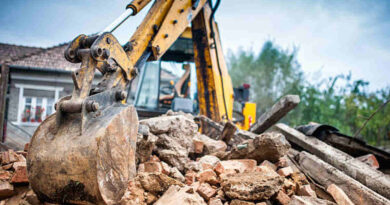Maintaining Your Asphalt: Tips from Contractors
Asphalt is a popular choice for driveways, parking lots, and roads due to its durability and cost-effectiveness. However, like any material exposed to the elements, it requires regular maintenance to ensure its longevity and continued performance. In this article, we will delve into expert tips from seasoned paving contractors to help you maintain your asphalt surfaces effectively. Whether you’re a homeowner, business owner, or property manager, these insights will help you keep your asphalt in prime condition. Guide to selecting the Lodi Concrete Driveway Contractors.
Understanding Asphalt and Its Challenges
Before diving into maintenance tips, it’s essential to understand the nature of asphalt and the challenges it faces. Asphalt is a mixture of aggregates, binder, and filler, used primarily for road construction. Its flexible nature makes it ideal for handling varying weather conditions and traffic loads. However, exposure to sunlight, water, and temperature fluctuations can lead to issues such as cracking, potholes, and degradation over time.
Composition of Asphalt
Asphalt is a composite material composed of aggregates, which include crushed stone, gravel, or sand, and a binder, typically bitumen. This mixture is heated and laid down in layers, where it hardens and forms a sturdy surface. The choice of aggregates and binder affects the quality and durability of the asphalt, highlighting the importance of selecting the right materials for your specific needs.
Environmental Impact
Asphalt’s exposure to environmental factors can significantly affect its performance. Sunlight can cause the bitumen to oxidize, leading to a brittle surface prone to cracking. Water is another significant adversary, as it can seep into small cracks, expand under freeze-thaw conditions, and cause further damage. Temperature fluctuations cause the asphalt to expand and contract, stressing the material and leading to structural issues over time.
Traffic and Usage
The amount and type of traffic an asphalt surface endures also impact its longevity. Heavy vehicles, frequent usage, and high-speed traffic can cause wear and tear faster than light, occasional use. Understanding the expected load and usage pattern helps in designing a more robust asphalt surface, tailored to withstand specific stresses and prolong its lifespan.
Common Issues with Asphalt
- Cracking: Often caused by the expansion and contraction due to temperature changes, cracking is a common issue. It’s vital to address cracks promptly to prevent them from expanding and causing further damage. Cracks can start small, but if left unattended, they can widen and deepen, allowing water to penetrate and weaken the surface further.
- Potholes: These occur when water penetrates the asphalt surface, weakening the underlying base. Over time, this leads to the formation of potholes, which can be a hazard to vehicles and pedestrians. The process begins with small cracks that allow water to enter, and as vehicles drive over these areas, the surface weakens and eventually collapses.
- Fading: Prolonged exposure to sunlight can cause the asphalt binder to break down, leading to a faded and worn appearance. This not only affects the visual appeal but also indicates a weakening surface that may become more susceptible to further damage.
- Drainage Problems: Poor drainage can result in water pooling on the surface, accelerating damage and leading to structural issues. Proper drainage design is crucial in preventing water accumulation, which can exacerbate the degradation of the asphalt surface.
Tips for Maintaining Your Asphalt
Regular maintenance is the key to extending the life of your asphalt surfaces. Here are some expert recommendations from Lodi asphalt paving contractors:
Routine Inspections
Conduct regular inspections of your asphalt surfaces to identify potential issues early. Look for signs of cracking, potholes, and drainage problems. Early detection allows for timely repairs, preventing minor issues from escalating into major problems.
- Frequency of Inspections: Schedule inspections at least twice a year, ideally in the spring and fall. Seasonal changes can exacerbate existing issues, and routine checks help in catching problems early.
- What to Look For: During inspections, pay close attention to the edges of the asphalt, as they are more susceptible to wear. Also, check for any oil or chemical spills, which can weaken the surface.
- Documenting Issues: Keep a detailed record of all inspections, noting the location and severity of any issues. This documentation can guide maintenance efforts and provide valuable information to contractors if professional repairs are needed.
Sealcoating
Sealcoating is a protective layer applied to the asphalt surface to shield it from UV rays, water, and oil spills. It helps maintain the asphalt’s appearance and extends its lifespan. Consider sealcoating every 2-3 years, depending on the traffic and weather conditions in your area.
- Benefits of Sealcoating: Beyond protection, sealcoating enhances the visual appeal of asphalt, giving it a fresh, black finish. It also fills minor surface imperfections, providing a smoother surface.
- Timing and Conditions: Apply sealcoating during warm, dry weather conditions to ensure proper adhesion and curing. Avoid application during wet or freezing conditions, as this can compromise the effectiveness of the sealcoat.
- Choosing the Right Product: Select a high-quality sealcoating product suitable for your specific climate and usage conditions. Consult with a professional to determine the best option for your needs.
Crack Sealing
Addressing cracks as soon as they appear is crucial in preventing them from spreading. Use a high-quality crack sealant to fill the gaps and prevent water infiltration. This simple step can significantly extend the life of your asphalt.
- Types of Crack Sealants: Choose between hot-pour or cold-pour sealants based on the size and severity of the cracks. Hot-pour sealants are typically more durable and suitable for larger cracks.
- Application Process: Clean the cracks thoroughly before applying sealant to ensure proper adhesion. Follow the manufacturer’s instructions for application to achieve the best results.
- Regular Monitoring: After sealing, continue to monitor the area for new cracks or signs of the sealant wearing away. Regular maintenance will help in preserving the integrity of the asphalt.
Proper Drainage
Ensure that your asphalt surfaces have adequate drainage to prevent water accumulation. Properly graded surfaces will direct water away from the asphalt, minimizing potential damage. If necessary, consult with a paving contractor to improve drainage solutions.
- Assessing Drainage Needs: Evaluate the slope and grading of your asphalt surfaces to ensure water flows away efficiently. Look for areas where water tends to pool and address these with proper grading or drainage systems.
- Installing Drainage Solutions: Consider installing French drains, catch basins, or trench drains to manage water flow effectively. Professional installation ensures that these systems function optimally.
- Regular Maintenance: Keep drainage systems clear of debris and blockages. Regular cleaning and inspection help in maintaining their effectiveness and preventing water-related damage to the asphalt.
Pothole Repair
Potholes not only diminish the appearance of your asphalt but also pose a safety risk. Promptly repair potholes by cleaning the area, removing loose debris, and filling the hole with a suitable asphalt mix. Compact the material thoroughly to ensure a smooth and durable surface.
- Identifying Pothole Causes: Understand the underlying causes of potholes, such as poor drainage or heavy traffic, to address them effectively. This knowledge can help prevent future occurrences.
- Repair Techniques: Choose between cold patch or hot mix asphalt for repairs, depending on the size and location of the pothole. Hot mix is generally more durable and suitable for high-traffic areas.
- Post-Repair Care: After repairing potholes, monitor the area for any signs of further deterioration. Regular inspections and maintenance will help in maintaining the integrity of the repair.
Regular Cleaning
Keep your asphalt surfaces clean by removing debris, leaves, and dirt regularly. Accumulated debris can trap moisture, leading to deterioration. Pressure washing can be an effective method to clean and maintain the surface.
- Importance of Cleaning: Regular cleaning prevents the buildup of organic materials that can harbor moisture and lead to the growth of weeds or moss, which can damage the asphalt.
- Cleaning Techniques: Use a broom or blower to remove loose debris, and consider pressure washing for a deeper clean. Ensure that the pressure setting is appropriate to avoid damaging the surface.
- Frequency of Cleaning: Establish a cleaning schedule based on the environment and usage of your asphalt surfaces. More frequent cleaning may be required in high-traffic or heavily wooded areas.
Choosing the Right Paving Contractor
Selecting a reputable paving contractor is crucial for quality asphalt maintenance and repairs. Here are some tips to consider when choosing a contractor:
- Experience and Expertise: Look for contractors with extensive experience in asphalt paving and maintenance. They should have a solid reputation and a track record of successful projects. An experienced contractor will understand the nuances of different asphalt types and the specific maintenance needs they entail.
- Licensing and Insurance: Ensure that the contractor is licensed and insured. This protects you from any liabilities in case of accidents or damages during the project. Verify their credentials and insurance coverage to ensure they meet industry standards.
- References and Reviews: Ask for references and read online reviews to gauge the contractor’s reliability and quality of work. A reputable contractor will be more than willing to provide references from satisfied clients. Online platforms and local business directories can also offer insights into their reputation.
- Detailed Estimates: Request detailed estimates from multiple contractors to compare pricing and services. Be wary of significantly low bids, as they may indicate subpar materials or workmanship. A detailed estimate should outline all aspects of the project, including materials, labor, and timelines.
- Communication and Professionalism: Choose a contractor who communicates clearly and professionally. They should be willing to address your questions and concerns throughout the project. Effective communication ensures that you are informed about the progress and any potential issues that may arise.
Conclusion
Maintaining your asphalt surfaces is essential for ensuring their longevity and performance. By following these expert tips from Lodi asphalt paving contractors, you can keep your asphalt in top condition and avoid costly repairs. Remember, regular inspections, timely repairs, and proper maintenance are key to preserving the integrity of your asphalt surfaces.
Investing in quality materials and professional services will not only enhance the appearance of your property but also provide a safe and reliable surface for years to come. Whether you’re managing a residential driveway or a commercial parking lot, these insights will guide you in making informed decisions about your asphalt maintenance needs.
With these strategies in hand, you can confidently maintain your asphalt surfaces, ensuring they remain functional and visually appealing for the long haul. Regular upkeep not only prolongs the life of your asphalt but also maximizes your investment, providing peace of mind and long-term satisfaction.




